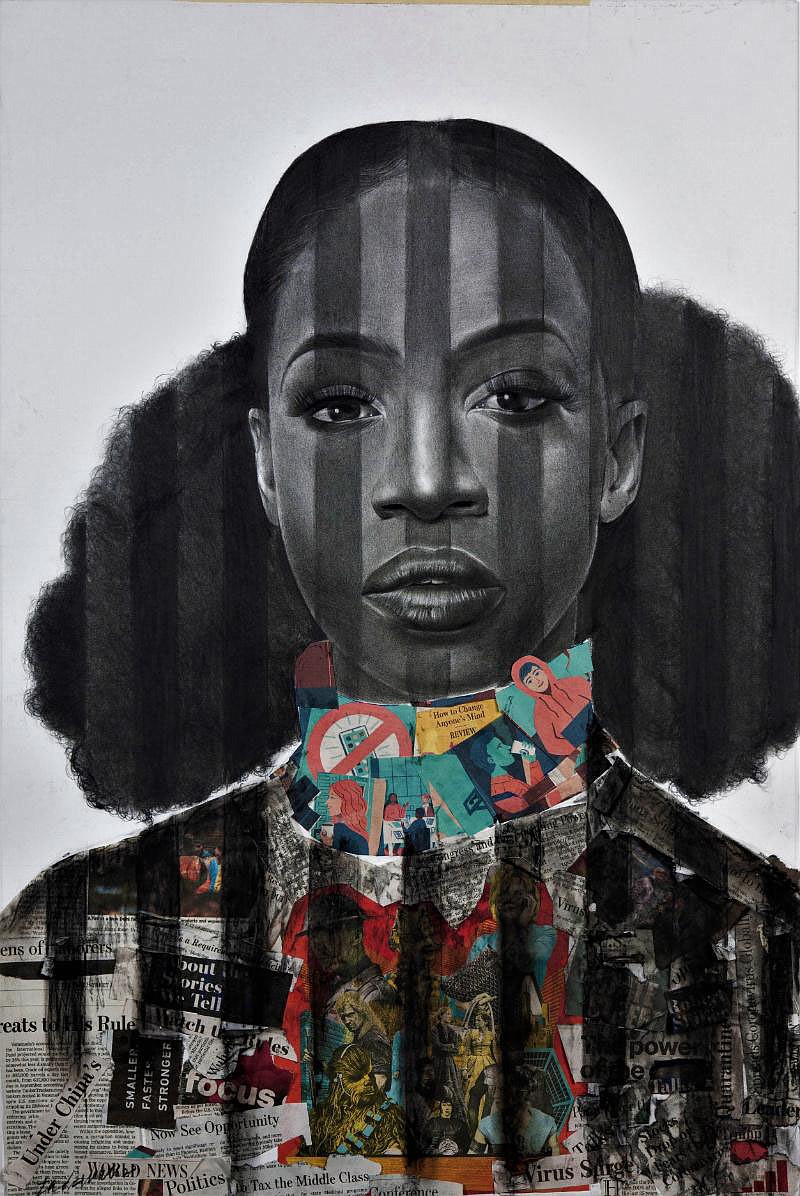Oluwatobi Adewumi has been preparing for his solo exhibition at Art Ventures in Fayetteville for more than a year. The Nigerian-born, south Arkansas-based contemporary artist created 22 multimedia drawings and works for "Headlines," an exhibition that "reveals the complexity of the Black woman as culture bearer." Adewumi discussed his work with What's Up! ahead of the exhibition's opening on Sept. 2:
Q. What can you share about the themes you're exploring in "Headlines?" What is the significance of the exhibition's title?
A. The themes or title of the artworks were created around the headlines issues in the society that affects the female and pays tribute to Black women. For example, historically, Black women in the U.S. are looked upon as welfare queens and are disrespected for bringing children into the world rather than being considered as nurturers and caretakers... They are called angry and loud instead of outspoken and direct. Really, they are providers who are not given credit for the work they do to keep their families together in a system that perpetuates poverty and lack of resources. Black women cannot even have their stories portrayed fairly and truthfully and are written out of their own realities. These are some of the challenges that I try to explore with my art.
"Headlines" is the title of my exhibition because it peels [back] the layer of labels cast upon Black women by the larger society, to reveal their truth. My work shows Black women are varied, resilient, powerful human beings that don't belong in a box, on a shelf like a product.
Q. How would you describe your work, or your general style, to someone who cannot see it?
A. I see and understand the world through people. Their faces, expressions and gazes allow me to represent the often-overlooked faces of Black women across the diaspora. I create hyper-realistic portraits in charcoal, and alternate or combine that with abstract layers of paint and other media. A particular piece of iconography I use in the work is the US ISBN product code, which represents the "bill of goods" about Black womanhood being sold to us by majority society. I am interested in giving space to marginalized voices and how the world sees race, shows passion, asks questions, hope, and weakness. The women who populate my work have been pushed to the second class and given negative images; however, they have stories, and a true history society must acknowledge.
Q. How is your relationship with each piece you create impacted by the audience's interaction with it?
A. I believe the artist still holds the narration to their piece, but it may very well be interpreted differently by the viewer. Everything I create comes with a story, and I love that because it gives more meaning or depth to the experience -- I give myself a fair chance to create a piece with a clear and unified message that the audience will "get." The goal is to have viewers see and feel what I worked to express. But sometimes the viewer sees that and more as the work becomes an entity all its own in the end.

More News
FAQ
‘Headlines’
WHEN — Sept. 2-Oct. 31; opening reception 5-8 p.m. Sept. 2
WHERE — Art Ventures Gallery, 20 S. Hill Ave. in Fayetteville
COST — Free
INFO — 871-2722, artventures-nwa.org

